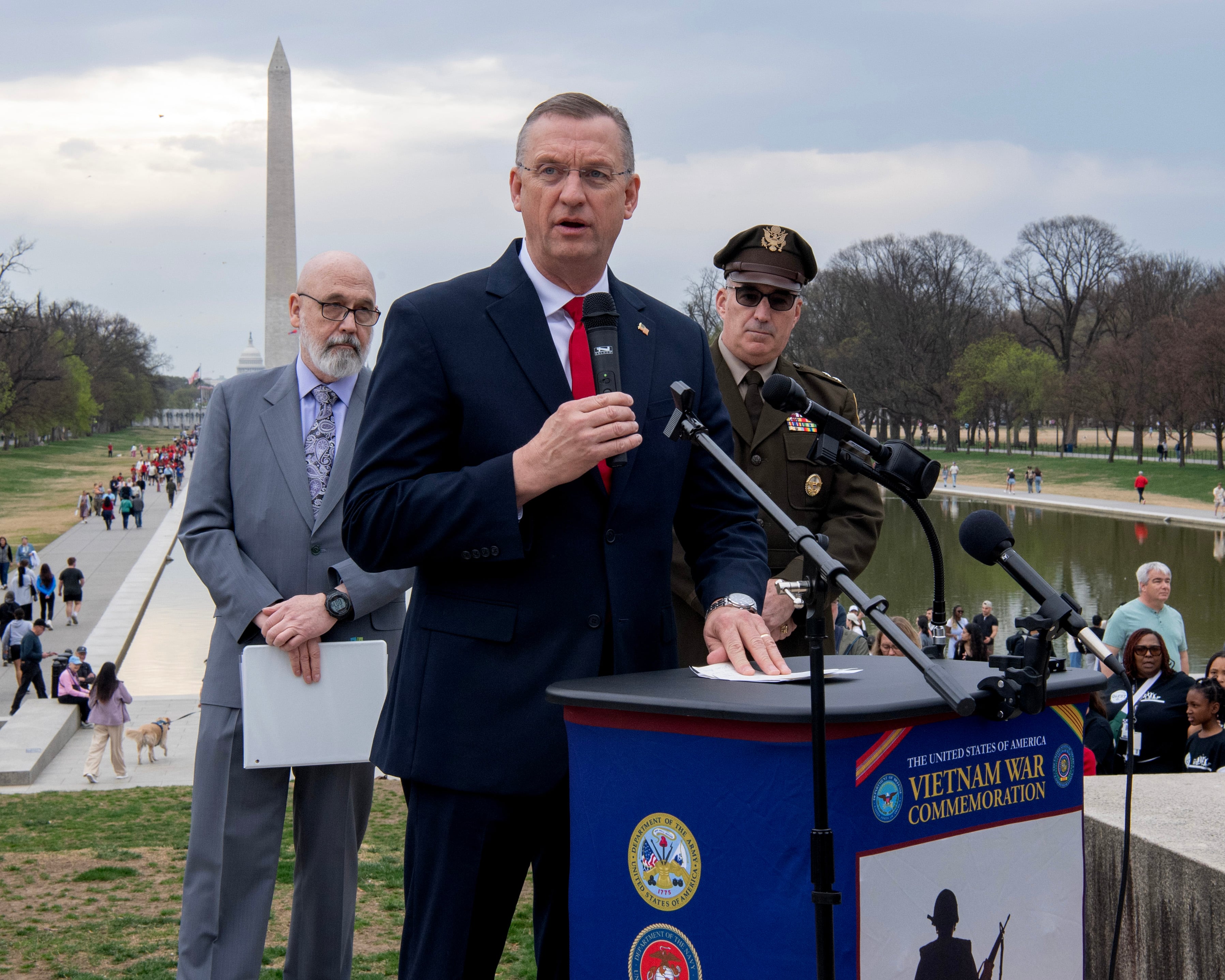The Air Force has announced finalists for the 2019 Spark Tank competition — a platform for airmen to showcase their innovative ideas to the service’s leadership and solicit funding for their product’s expansion.
Out of this year’s 320 submissions, six finalists were selected and an additional project will be highlighted at the Air Force Association’s Air Warfare Symposium in Orlando, Florida, on Feb. 28.
“We asked Airmen to innovate, and they delivered," Air Force Vice Chief of Staff Gen. Stephen Wilson, who chaired the 2019 Spark Tank board, said in a news release. “This year’s Spark Tank candidates knocked it out of the park, and paring their submissions down to a handful of ideas was no easy feat — the ingenuity of our Airmen never ceases to amaze me.”
Airmen first submitted proposals via the Air Force Ideation Platform. Then they voted and commented on one another’s submissions.
The selection board chose finalists based on safety, policy, service-wide implementation, technical feasibility and scalability, according to the news release. Some of the key themes this year included automation, workforce development, readiness, maintenance innovation and connectivity.
Here are the finalists:
Staff Sgt. Travis W. Alton, M-1 Cargo Parachute:
Alton, an Air Mobility Command airman at Little Rock Air Force Base, Arkansas, developed a parachute fail-safe device. The device is designed to eliminate malfunctions caused by cargo parachutes releasing prematurely in the event of a timer malfunction. It’s “a problem that’s widely known, but has yet to be fixed,” Alton said.
The simple, cheap device physically prevents the parachute’s timing mechanism from releasing in the event of a malfunction, while not hindering current rigging methods.
Master Sgts. Bridget A. Neighbor and Jonathan P. Zielinski, and Staff Sgt. Frederick A. Van Riper, MQ-9 Digital Link:
Three airmen from Air Force Special Operations Command have proposed an emulator that mounts all the minimal essential parts of an MQ-9 into a tactical case. The system lightens the cargo load for expeditionary missions. A small piece of test equipment will replace having to tow an aircraft for link checks, reducing the foot print for bare base set-ups and expediting expeditionary launch and recovery element operations.
“This has the potential to affect the entire ground control station fleet,” Neighbor said. “Instead of having to tow around an aircraft, you just get this little box.”
Master Sgt. Jonathan Maas, Chem Renewable Energy:
Maas, an airman stationed at Spangdadahlem Air Base, Germany, designed a product that provides uninterrupted chemical agent detection for air bases. The device uses a renewable energy power supply so the detector continually runs with minimal user maintenance, including the switching of batteries.
“Currently, no commercial products offer the battery life to accomplish this,” Maas said, adding that the product can use solar power, but also be plugged into traditional power outlets.
Ms. Mia Tobitt and Master Sgt. William Bell, Integrated Comm Respirator:
Two airmen from the 100th Air Refueling Wing out of RAF Mildenhall, England, are presenting a respirator with an integrated camera and speaker/microphone to enhance communication between airmen in confined spaces. The device allows outside input, second opinions and detailed communication at critical on-the-job moments, while increasing safety.
“If divers, race car drivers, and astronauts have unique bi-directional audio and video technology, why shouldn’t we have the same technology?” the inventors' submission asks.
Preparatory School Cadet Usama Bamieh, Lexi software:
Made by a preparatory cadet at the Air Force Academy, Lexi is an innovative computer software that helps weather forecasters develop products for customers. The software has the ability to compile data points from multiple locations, make logical decisions based on these data points and then assist a forecaster by preparing the mission execution forecast.
Everyday, weather airmen produce mission execution forecasts for pilots, command staff, and even intelligence agencies. These are time consuming, but they include important information on turbulence, ice conditions, and more. Lexi software, though, can streamline the process.
“Essentially, it will compile these hundreds of data points from the same government sources a forecaster would, but it would do it in a fraction of the time," Bamieh said, adding that the software could save the Air Force roughly 48,000 man hours per year.
Tech. Sgt. Matthew Steht and Tech. Sgt. Cory Snyder, Adaptive Basing:
The rapid deployment of four aircraft can take 72 hours and more than 40 people to get off the ground, allowing the enemy more time to prepare for an attack. An adaptive basing concept from two Air National Guardsmen out of Fresno, California, though, streamlines the time to five hours and 12 people.
The proposal is for a modified semi-truck trailer designed to quickly lug fighter aircraft between staging areas.
“The way we move around is too slow,” Steht said. The modified trailer “makes it so we’re not reliant on anybody or anything. It’s a completely self-contained fighter wing in a box," he added.
Tech. Sgt. Oralia Howard, Launcher Overspray Protectors:
Another Europe-based airman out of RAF Lakenheath, England, put forth a set of “overspray protectors.” The protectors replace tape to cover critical components and markings while conducting scheduled inspections and maintenance on missile launchers for F-15 Strike Eagles and F-16 Fighting Falcons.
The finalists will receive funding and other resources from the Air Force to implement their innovations.
“The Air Force Spark Tank winner will also receive a trophy, and the member’s unit will display the Spark Tank championship cup on behalf of the unit until unseated at a future competition,” according to the service.
Kyle Rempfer was an editor and reporter who has covered combat operations, criminal cases, foreign military assistance and training accidents. Before entering journalism, Kyle served in U.S. Air Force Special Tactics and deployed in 2014 to Paktika Province, Afghanistan, and Baghdad, Iraq.



